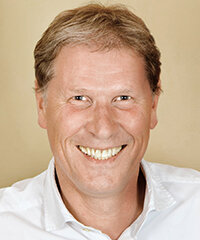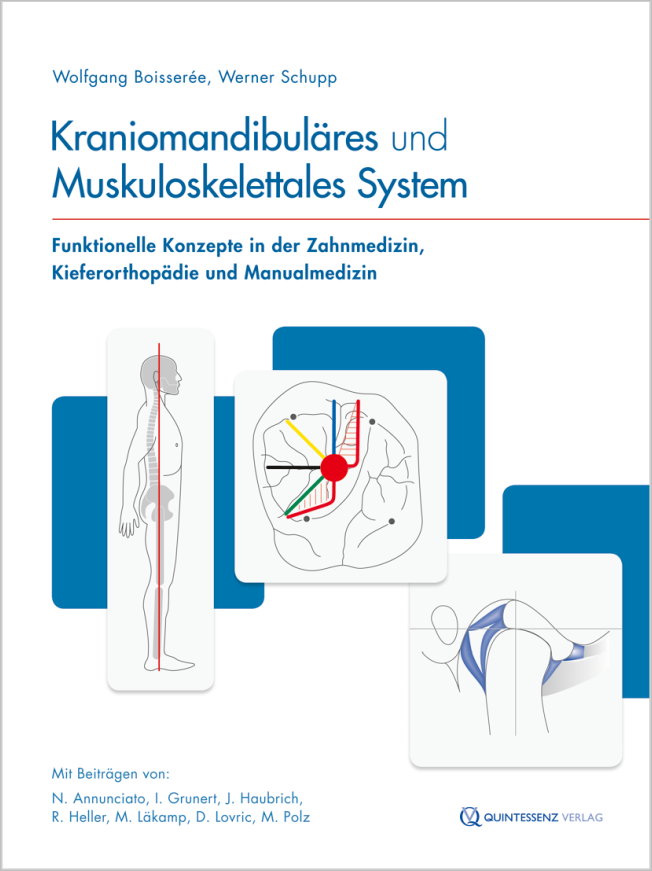Journal of Aligner Orthodontics, 3/2024
Case reportPages 207-227, Language: EnglishHaubrich, Julia / Schupp, Werner / Boisserée, WolfgangAligner therapy offers a valuable alternative to fixed appliance treatment in young and adult patients, making it possible to reduce potential side effects and providing an aesthetic therapeutic option. In some patients, abrasions, changes of tooth shape or loss of tooth substance require an additional tooth restoration to obtain an optimal outcome that satisfies the patient. Instead of reducing healthy tooth substance for the preparation of a crown or veneer, the development of composite in the past few years has led to improved results in terms of both longevity and aesthetics. The present article outlines different patient examples of interdisciplinary treatment with aligner orthodontics followed by minimally invasive restorations with composites on anterior teeth.
Keywords: aligner orthodontics, attachments, composite, in-office aligners, interdisciplinary dentistry, Invisalign, minimally invasive restorations, OnyxCeph Aligner 3D software
Journal of Aligner Orthodontics, 2/2023
Review articlePages 113-127, Language: EnglishSchupp, Werner / Haubrich, Julia / Klingberg, Mario / Boisserée, Wolfgang / Sim, Un-seob / Kim, HoonTo overcome the limitations of the conventional vacuum thermo forming manufacturing process, the method of direct 3D printing of aligners has been developed. This presents more advantages than simply avoiding a two-step process, whereby the model needs to be printed first before the aligners are thermoformed. The shape memory function of-fers new and improved biomechanical options. This article presents the new direct 3D printed aligner material from Graphy (Seoul, South Korea) and a patient example demon-strating the course of treatment with the new material.
Keywords: 3D printing, aligner orthodontics, direct aligner printing, Graphy, in-office aligners, interdisciplinary treatment, shape memory, tooth movement
QZ - Quintessenz Zahntechnik, 9/2020
ErfahrungsberichtPages 968-984, Language: GermanBoisserée, Wolfgang / Schupp, WernerKaufunktionsstörungen hängen häufig mit einer Diskrepanz zwischen habitueller Okklusion und einer physiologischen (zentrischen) Kondylenposition zusammen. Wenn die bestehende Okklusion einer funktionellen Vorbehandlung bedarf, ermöglicht der Artikulator eine praxisnahe Analyse der okklusalen Situation. Um aussagekräftige Ergebnisse zu erhalten, werden auf zahnärztlicher Seite dimensionsgenaue Scans oder Abformungen gefordert, eine korrekte Gesichtsbogenübertragung und repräsentative Registrate, die eine Kieferrelation in physiologischer Kondylenposition ermitteln. Zahntechniker brauchen dimensionsgenaue Modelle und eine präzise Artikulatormontage. Ist eine okklusale Korrektur indiziert, kann die therapeutische Kieferrelation im Artikulator nahtlos in den digitalen Workflow für die Herstellung einer Positionierungsschiene überführt werden.
Keywords: Artikulator, Kondylenposition, Okklusion, Kaufunktionsstörung, Positionierungsschiene
Kieferorthopädie, 4/2020
Pages 335-345, Language: GermanBoisserée, Wolfgang / Schupp, Werner / Bock, JensInnerhalb des Beitrags werden die verschiedenen bildgebenden Wiedergabeverfahren zur Diagnostik bei kraniomandibulären Dysfunktionen übersichtsartig zusammengefasst.
Keywords: Bildgebung, Kiefergelenk, radiologische Anatomie des Kiefergelenks
Kieferorthopädie, 4/2020
Pages 383-396, Language: GermanBoisserée, Wolfgang / Schupp, WernerEine komplexe funktionell-kieferorthopädischprothetische KasuistikDas Kiefergelenk stellt eines der komplexesten Gelenksysteme des menschlichen Körpers dar. Ein entscheidendes Merkmal ist die direkte Wechselbeziehung des Kiefergelenks zur Okklusion. Eine häufige Ursache der craniomandibulären Dysfunktion liegt in der Diskrepanz zwischen einer physiologischen Kondylenposition und der Verzahnung in maximaler Okklusion. In diesen Fällen führt die Okklusion zu passiven Verlagerungen von Gelenkanteilen und verursacht typische intraartikuläre Adaptationsprozesse. Häufig gibt die Funktionsanalyse alleine nicht genügend Auskunft über den Zustand der Gelenke und die Ursache von Schmerzen und Beschwerden. Der vorliegende Artikel stellt an einem Patientenbeispiel die mögliche Kombination des DVT in der Diagnostik und Therapie dar.
Keywords: CMD, DVT, MRT, Funktionsanalyse, Kondylenposition, Positionierungsschiene, COPA (Craniomandibuläre orthopädische Positionierungsapparatur), Alignertherapie
Journal of Aligner Orthodontics, 2/2019
Method presentationPages 147-164, Language: EnglishSchupp, Werner / Funke, Julia / Haubrich, Julia / Boisserée, WolfgangSplints as therapeutic treatment instruments in temporomandibular disorder patients are widely accepted. The combination of splint therapy and aligner orthodontics not only provides comfortable and almost invisible treatment but also constitutes a powerful instrument for the orthodontic treatment of the temporomandibular disorder patient. To this end, precise knowledge of the temporomandibular joint, temporomandibular disorders and treatment using removable and fixed splints is indispensable. The two-phase treatment and the combination of fixed splint and aligner transform occlusal splint therapy into a permanently stable occlusion with physiological posterior vertical support.
Keywords: aligner, temporomandibular disorder (TMD), temporomandibular joint (TMJ)
Journal of Aligner Orthodontics, 1/2019
Method presentationPages 31-41, Language: EnglishSchupp, Werner / Boisserée, Wolfgang / Tabancis, Maria / Funke, JuliaIn most cases the initial treatment approach for a temporomandibular disorder (TMD) is an occlusal splint. The occlusal splint has to be regarded as a reversible therapeutic method. A definitive continuing treatment in orthodontics can only take place after the splint has delivered an improvement of the symptoms. As well as its use for the therapeutic approach, the occlusal splint can also be used as a diagnostic tool, as it allows determination of the physiological, three-dimensional position of the mandible. From this position, definitive orthodontic treatment can be started.
Keywords: occlusal splint, temporomandibular disorder (TMD), temporomandibular joint (TMJ)
Journal of Aligner Orthodontics, 4/2018
Pages 267-281, Language: EnglishSchupp, Werner / Funke, Julia / Boisserée, WolfgangThe rest position of the temporomandibular joint (TMJ) and the therapeutic construction bite vs. the centric biteThe rest position of the temporomandibular joint (TMJ), the so-called 'centric relation', is discussed controversially. As yet there is no clear definition. According to current understanding, the condyles are bilaterally in the most anterosuperior position over the articular tubercle. The ligaments of the capsule are maximally relaxed. In rest position of the TMJ, the integral of the muscle activity is at the lowest level. The rest position of the joint is a probability and derives from mutual dependencies. Therefore an exact definition is difficult, if not impossible. Finding the rest position, especially in a pathological situation, is difficult. Various procedures are described, but none has proved to be the only true method. The determination of the rest position in a pathological situation can only determine a starting point for reversible therapy by an occlusal splint. This rest position can be defined by palpation of the condyles within the inner ear canal to gain more information of the tissue situation, especially the bilaminar zone, the movement pattern, the symmetry of the right and left sides and the position of the condyles while taking the therapeutic construction bite. The centric bite is easier to take and shows the relation of the mandible in a rest position in healthy joints.
Keywords: centric bite, construction bite, occlusion, rest position, temporomandibular disorder (TMD), temporomandibular joint (TMJ)
Journal of Aligner Orthodontics, 3/2018
Pages 199-213, Language: EnglishSchupp, Werner / Funke, Julia / Boisserée, Wolfgang / Heller, Rainer / Haubrich, JuliaThe starting point for any orthodontic occlusion diagnostics, treatment planning and subsequent therapy should be the physiological mandibular position. A possible discrepancy between maximal intercuspation and occlusion in the physiological mandibular position should be carefully investigated. An unrecognised and therefore untreated temporomandibular dysfunction (TMD) nullifies the success of orthodontic treatment. If there are signs of a TMD in the short screening test, the following detailed functional diagnosis, possibly including the musculoskeletal system (MSS), is necessary. This also includes the diagnosis of analogue or virtual models mounted in a physiological condylar position. Cone beam computed tomography (CBCT) and sometimes also an MRI scan is needed to specify the diagnostics in some patients.
Keywords: TMD, temporomandibular system, musculoskeletal system, temporomandibular disorder (TMD), temporomandibular joint (TMJ)
Kieferorthopädie, 4/2015
TechnobytesPages 349-365, Language: GermanSchupp, Werner / Boisserée, Wolfgang / Haubrich, Julia / Läkamp, Manfred / Meinzer, MaxDie Okklusion kann Ursache für funktionelle Störungen sein, die das kraniomandibuläre und das muskuloskelettale System (MSS) betreffen. Ist eine Okklusionskorrektur notwendig, sollte diese immer mit dem geringstmöglichen Aufwand erfolgen, um die irreversible Reduktion von Zahnhartsubstanz auf das Notwendigste zu reduzieren. Die Lösung liegt häufig in der interdisziplinären Zusammenarbeit zwischen Kieferorthopädie und Prothetik. An einem Patientenbeispiel wird das interdisziplinäre Zusammenwirken dargestellt. Digitale Verfahren nehmen ein immer größeres Spektrum in der Zahnheilkunde und Zahntechnik ein.
Keywords: CMD, Okklusion, Okklusionsschiene, manuelle Medizin, muskuloskelettales System, Kieferorthopädie, Invisalign®, Prothetik, CAD/CAM




